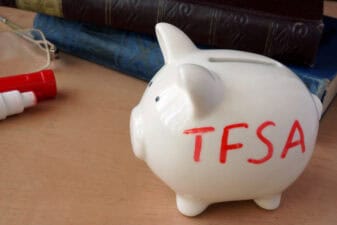On February 21, the American investor Michael Burry seemingly warned about a market sell-off in his Twitter post. The hedge fund manager — popularly known as The Big Short investor — believes that “at this point, the market is dancing on a knife’s edge.” But is it really true that a market crash could occur in 2021? Let’s explore.
Michael Burry’s bets
Michael Burry is well known for accurately predicting and profiting from the 2007-2008 subprime mortgage crisis in the United States. He mainly makes most of his money by shorting overvalued stocks in the market. So, Burry is likely to know well what he’s talking about.
However, the biggest issue with people predicting a market crash is that they mostly focus on one specific indicator while ignoring other key factors. In his tweet about the market crash, Burry points towards a chart showing the correlation between the margin debt data and the S&P500 Index movement. The margin debt is surging with rallying market indexes lately. Margin debt simply refers to the money brokerage customers borrow to buy or short stocks.
But completely relying on margin debt’s correlation with the market as an indicator to predict a market crash might not be the best idea. For example, margin debt increased at an alarming rate between late 2012 to 2015 — going well beyond its previous record level. However, it neither predicted a huge market crash, nor did it predict a recession.
But a market correction is likely
While surging margin debt can’t always predict a market crash, it may point towards an upcoming market correction. However, long-term investors don’t need to fear such a warning. In general, market corrections are essential for healthy stock market functioning, as the market can’t keep going in one direction forever. Despite all the warning signs that the margin debt correlation indicator has given since 2012, the S&P500 benchmark has yielded an astonishing 208% positive returns. So, if you stay invested in fundamentally sound companies for the long term, you’re safe.
Where should you invest then?
If you want to make a good passive income without a lot of risks, you should invest in large dividend-paying stocks with wide moats. But if you expect to grow your wealth exponentially, then you should invest in high-growth stocks instead. For example, if you’d invested $1,000 in Shopify (TSX:SHOP)(NYSE:SHOP) stock five years ago, it would have turned into over $58,000 today. The Canadian e-commerce company is continuing to yield solid returns each year. Its stock has consistently posted more than 170% annual gains in 2019 and 2020.
As of Monday, Shopify stock was up 20% on a year-to-date basis. As more small and medium businesses continue to improve their online presence, its strong financial growth could continue in the coming years — supporting its stock price rally.
Bank stocks like Royal Bank of Canada (TSX:RY)(NYSE:RY), Bank of Nova Scotia (TSX:BNS)(NYSE:BNS), and Bank of Montreal (TSX:BMO)(NYSE:BMO) could be best suited for dividend investors seeking regular passive income. They might not give you extraordinarily high returns on your investment like Shopify, though. RBC stock has risen by 6% in 2021 so far, while BNS and BMO are trading with about 5% gains.
The shares of RBC, Bank of Nova Scotia, and Bank of Montreal currently have 3.9%, 5%, and 4.2% dividend yield, respectively. These banks have suffered due to the pandemic-driven higher provisions for credit losses in the last few quarters.
The Canadian banking sector earnings season will kick off on February 23, with Bank of Nova Scotia and Bank of Montreal announcing their Q1 results. Analysts expect all these large banks to report a year-over-year drop in their Q1 earnings before the trend turns positive in the next couple of quarters.


